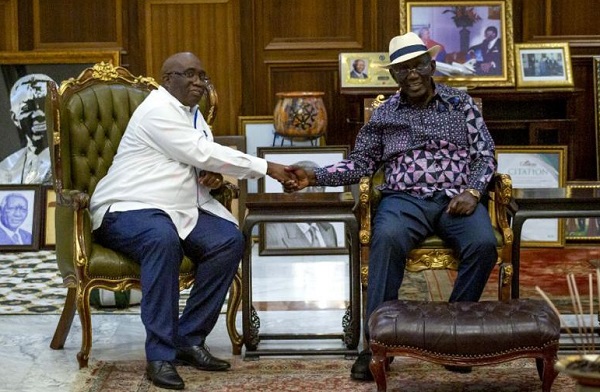Ghana’s national sex ratio is 97 males to 100 females – Prof Annim

With a total population of 30.8 million people, Ghana’s urban population has expanded from 50.9 per cent in 2010 to 56.7 per cent in 2021.
Professor Kobina Annim, the Government Statistician, stated that the Greater Accra and Ashanti regions accounted for 47.8% of the growth in urban population.
He remarked on Thursday during the unveiling of the 2021 Population and Housing Census general report that Greater Accra, Ashanti, Eastern, and Central regions accounted for more than half of the country’s population.
Females account for 50.7 per cent of the population, while males account for 49.3 per cent, resulting in a national sex ratio of 97 males for every 100 females.
Males outweigh females by 0.3 per cent in rural areas, though.
Males outnumber females in six regions, ranging from 5.1 per cent in the Western North to 0.5 per cent in Bono East.
With the exception of Greater Accra, males under the age of 20 outweigh females in all regions.
Males dominate the 30-64 age group, which is mostly the working-age group, in the Western North, Ahafo, and Western areas.
Between 2010 and 2021, the annual intercensal population growth rate was 2.1 per cent, the lowest since independence, and ranged from 3.7 per cent in the Northern Region to 1.0 per cent in the Eastern Region, according to Prof Annim.
According to the Government Statistician, the average household size declined from 4.1 to 3.3 in urban areas and from 5.0 to 4.0 in rural regions between 2010 and 2021.
Between 2010 (103) and 2021, he stated, national population density (the number of people occupying a square kilometre of land) grew by 26 people (129).
The Greater Accra region saw the greatest growth, up 445 people from 1,236 to 1,681, while the Savannah region saw the smallest gain, down 6 people from 13 to 19.
Kumasi Metropolitan, Kpone Katamanso, Tamale Metropolitan, Ga South, and Sagnarigu Municipal were the top five districts with the biggest population, he said.
He explained that the country’s population age structure was shifting from one dominated by children aged 0 to 14 to one dominated by youth aged 15 to 35, with a higher concentration of young population in metropolitan regions.
Prof Annim stated that there were 17,931,673 people aged 18 and up, accounting for 58 per cent of the population.
He noted that non-Ghanaians made up 294,341 of the counted population or 1% of the total and that nine out of ten of non-Ghanaians, 270,838 were from the ECOWAS area.
In addition, one in every eight married people had not registered their marriages, and women were more likely than men to be separated, divorced, or widowed.
He claimed that the majority of people were born in the areas where they were counted, with males outnumbering females.
Prof Annim stated that 68.6% of the population was covered by health insurance, with females having higher coverage than males.
In terms of religious affiliation, he stated that 74.7 per cent of Christians lived in cities, while 66.9% lived in rural areas.
He said that Islam has a population of 20.4 per cent in urban regions and 19.2 per cent in rural areas.
In the case of other religions, 3.3 per cent of practitioners lived in cities and 6.1 per cent lived in rural areas.
Traditional religion accounted for 0.8% in urban areas and 6.5 per cent in rural regions, according to the Government Statistician.
Source: Richard Mensah Adonu | Join our Telegram Group






